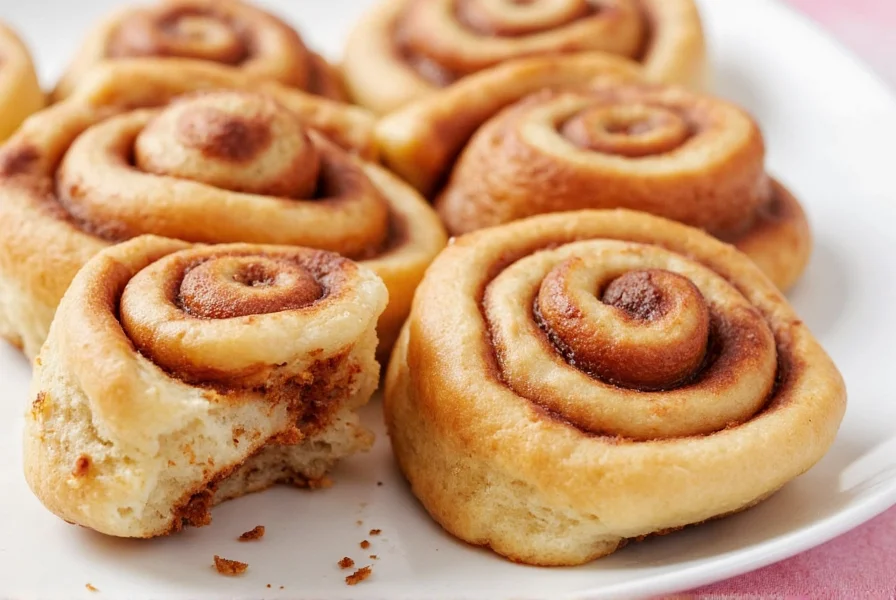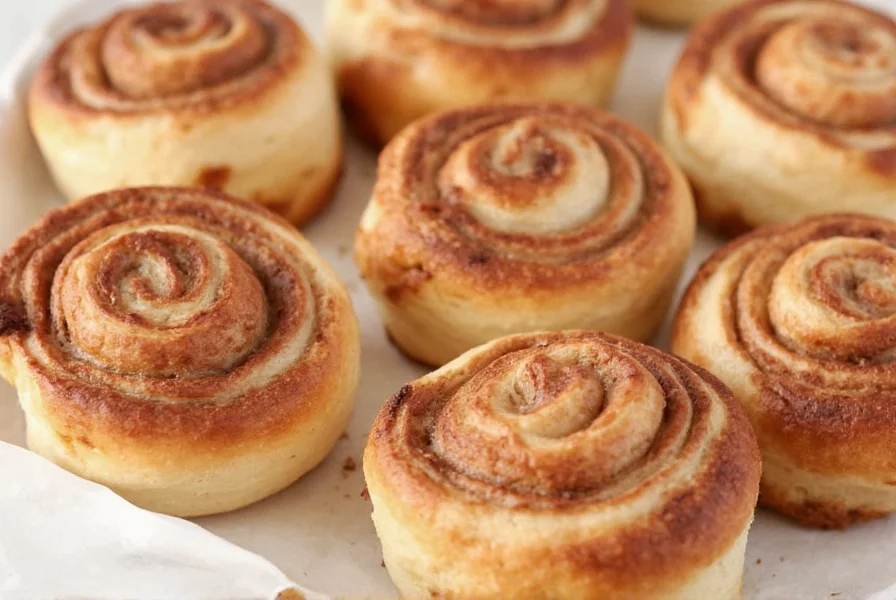Creating perfect mini cinnamon buns requires understanding their unique baking dynamics compared to regular-sized rolls. These bite-sized pastries have become increasingly popular for brunches, holiday gatherings, and even as thoughtful homemade gifts. Their compact size makes them ideal for portion control while delivering the same comforting cinnamon flavor in a more manageable format.
The Science Behind Perfect Mini Cinnamon Buns
Mini cinnamon buns aren't just shrunken versions of regular rolls—they require specific adjustments to achieve optimal results. The smaller size creates different heat transfer dynamics during baking, which affects both texture and flavor development. When preparing mini cinnamon roll dough, the ratio of filling to dough becomes more critical since there's less surface area for that signature cinnamon-sugar-butter mixture.
Professional bakers recommend using a slightly higher butter-to-sugar ratio in the filling for mini versions. This compensates for the reduced surface area and ensures each bite delivers that rich, caramelized flavor. The ideal mini cinnamon bun maintains a 3:1 dough-to-filling ratio, compared to the 4:1 ratio often used for standard rolls.
Essential Equipment for Mini Cinnamon Bun Success
While you can make mini cinnamon buns with basic kitchen tools, certain equipment significantly improves results:
| Equipment | Why It Matters | Recommended Alternative |
|---|---|---|
| 1.5-inch cookie scoop | Ensures uniform size for even baking | Tablespoon measure with consistent packing |
| Mini muffin tin | Prevents spreading and maintains shape | Regular muffin tin with parchment liners |
| Piping bag with small tip | Precise filling distribution | Small offset spatula |

Step-by-Step Mini Cinnamon Bun Preparation
Follow these professional techniques for consistently excellent mini cinnamon buns:
Dough Preparation
Start with a high-hydration dough (approximately 60% hydration) to compensate for the faster baking time. Overly dry dough becomes tough in mini portions. Knead until the dough passes the "windowpane test"—when stretched thin, it should transmit light without tearing. This elasticity prevents the buns from becoming dense during the shorter baking cycle.
Filling Application
Spread softened butter evenly across the rolled dough, leaving a ½-inch border. Mix ½ cup sugar with 2½ tablespoons cinnamon and ¼ teaspoon salt for the perfect spice balance. Sprinkle the mixture evenly, then add ⅓ cup chopped pecans or walnuts for texture contrast. Roll tightly from the long edge, pinching the seam closed.
Shaping and Baking
Cut the rolled dough into 1½-inch slices using unflavored dental floss for clean cuts without squishing. Place in greased mini muffin tins, leaving space for expansion. Allow proper proofing time—mini buns need 45-60 minutes at room temperature until they've increased by 50% in size. Bake at 350°F for 18-22 minutes until golden brown.
Common Mini Cinnamon Bun Problems and Solutions
Even experienced bakers encounter issues with mini cinnamon buns. Here's how to troubleshoot the most frequent problems:
- Flat, spread-out buns: Over-proofed dough or insufficient gluten development. Reduce proofing time by 15 minutes and ensure proper kneading.
- Dry texture: Overbaking or low dough hydration. Check oven temperature accuracy and increase dough liquid by 2 tablespoons.
- Filling leakage: Too much butter or improper sealing. Use chilled butter and pinch seam ends securely.
- Inconsistent sizing: Uneven cutting. Use dental floss and measure each slice before placing in tins.
Creative Mini Cinnamon Bun Variations
While classic mini cinnamon buns delight most palates, these innovative twists can elevate your baking:
Maple-Bacon Mini Buns: Incorporate 2 tablespoons of maple syrup into the filling and top with crumbled cooked bacon before baking. The sweet-savory combination creates an irresistible flavor profile that's perfect for brunch gatherings.
Apple Cinnamon Mini Rolls: Add ½ cup finely diced apples (like Honeycrisp) to the filling mixture. The fruit adds natural sweetness and moisture, creating pockets of tender apple throughout each mini bun.
Gluten-Free Mini Cinnamon Buns: Substitute traditional flour with a quality gluten-free blend containing xanthan gum. Increase liquid content by 15% and allow extra proofing time, as gluten-free dough typically requires more moisture and longer rising.
Storage and Serving Recommendations
Proper storage maintains the delicate texture of mini cinnamon buns. Store cooled buns in an airtight container at room temperature for up to 2 days. For longer storage, freeze unbaked portions on a parchment-lined tray, then transfer to freezer bags. Bake frozen mini buns directly from freezer, adding 3-5 minutes to baking time.
When serving mini cinnamon buns, consider presentation techniques that highlight their diminutive size. Arrange them in concentric circles on a platter, drizzle with cream cheese glaze using a zig-zag pattern, or serve with miniature forks for elegant presentation at brunch events. The ideal serving temperature is warm but not hot—allow them to cool for 10 minutes after baking for optimal texture and flavor release.











 浙公网安备
33010002000092号
浙公网安备
33010002000092号 浙B2-20120091-4
浙B2-20120091-4